Matador Network's Blog, page 1219
November 20, 2018
London’s latest skyscraper

The London skyline is about to get a facelift, courtesy of this new building shaped like a flower. Aptly named the “Tulip,” the tower will be 1,000 feet high, making it the second tallest in London (just four feet behind the Shard). British architects Foster + Partners revealed plans for the building on Monday, with construction starting in 2020 and a completion date of 2025.

Photo: Foster + Partners
While it’s still unclear exactly how the building will be used, the architects say it will serve as a cultural and educational resource, rather than a commercial or office space. The building furthers local government plans to create a “Culture Mile” to attract more visitors to London’s financial district.
Atop a tall stem, the building will be topped by a glass bud, which is slated to house 360-degree viewing galleries, a bar, and restaurants. The site will also feature a small park, rooftop garden, and sky bridges between observation decks.
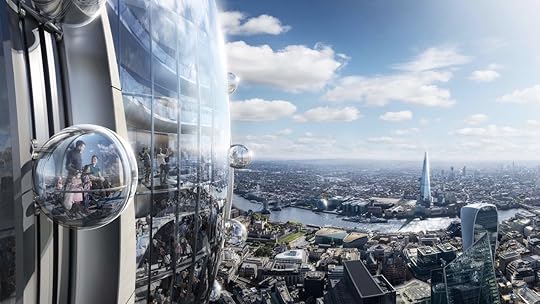
Photo: Foster + Partners
Jacob J. Safra, the billionaire who funded the building — as well as London’s famous Gherkin — said in a statement, “The Tulip’s elegance and soft strength complements the iconic Gherkin.” This sentiment was echoed by Norman Foster, founder and executive chairman of Foster + Partners, who said in a statement, “Continuing the pioneering design of 30 St Mary Axe [the Gherkin], the Tulip is in the spirit of London as a progressive, forward-thinking city.” 
H/T: CNN

More like this: London’s newest skyscraper will have a climbing window
The post London’s skyline is getting a new building: the Tulip appeared first on Matador Network.

NYC best outdoor winter activities
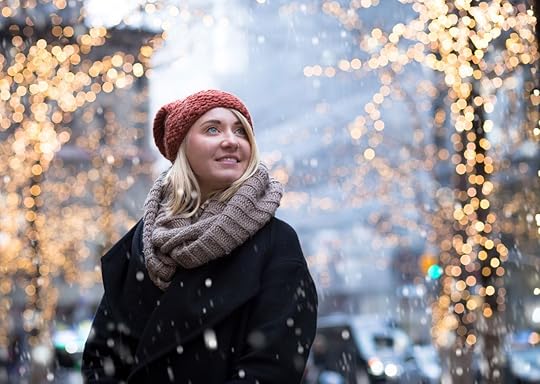
In New York City, we get every season. Our temperatures can rise past the 100-degree mark as well as drop down into the negatives. Whether it’s an extreme, or somewhere in between, you’ll face it all in NYC, but that doesn’t mean we hibernate come wintertime. Sure, you’ll need to bundle up, pack on those layers, and make sure to have warm food and drink, but some of the most fun things to do in the city can only be done in the winter. From ice skating to learning how to snowboard, here are six outdoor activities you can do during winter in NYC.
1. Holiday markets

Photo: Urbanspace/Facebook
Every year, usually around the beginning of December (but sometimes mid-November), several holiday markets pop up in different parts of the city. You can find the major ones in Columbus Circle, Bryant Park, and Union Square. It may just be the magic of the holidays, but while the markets are in the center of urban areas, they feel like Christmas villages separated from the hustle and bustle of NYC. At any market, you’ll find stall upon stall of jewelry, clothing, art, handmade goods, and more, as well as cuisines from around the world. The markets are fun to walk through even if you don’t plan on buying anything, but you’ll have a hard time not finding something you absolutely want to get — whether it’s for you or a loved one.
2. Ice skating
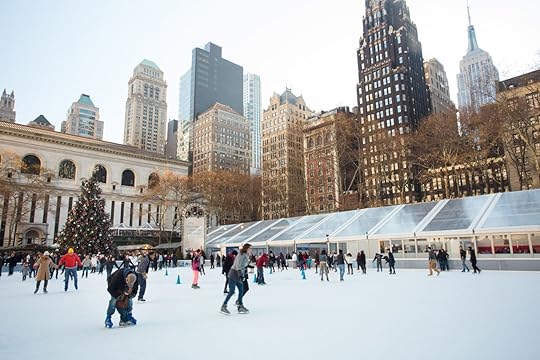
Photo: littlenySTOCK/Shutterstock
You may not want to go ice skating outside in the winter, but NYC’s outdoor ice skating rinks, where you’ll be surrounded by its unique scenery and have incredible views, should sweeten the deal. With ample rinks available all over, you can add ice skating to your day no matter where you are. There’s the rink at Bryant Park, Riverbank State Park in Hamilton Heights, and the World Ice Arena in Queens, just to name a few. Most rinks here will charge a fee to enter and for skate rentals, so be sure to account for that in your plans.
3. Sledding

Photo: a katz/Shutterstock
We get a lot of snow in NYC, so we make the best of what the weather throws at us by having fun with it. While the area may seem like it has a lot of flat ground, there are actually a surprising number of expansive, hilly spaces that lend themselves to being prime sledding territory. Parks will be your best bet, such as Van Cortlandt Park, Morningside Park, Inwood Hill Park, and Prospect Park.
4. Tree lighting ceremonies

Photo: gary718/Shutterstock
NYC is famous for many things, and tree lighting ceremonies are one of them. Most well-known is the one in Rockefeller Center, where one of the biggest Christmas trees in the world is lit up for the season (last year’s was 75 feet tall). Entry is free and on a first-come, first-served basis, though it will eventually be capped off. If you manage to nab a spot, you’ll witness performances from the Rockettes and different musical acts such as John Legend and Pentatonix, and you might even appear on TV — the event will be broadcast live on NBC. However, if you don’t want to chance not getting a spot or want to avoid the crowds, there are other ceremonies that you can attend. Bryant Park has a tree lighting ceremony that’s just as fun, and it includes a Skate-tacular, where a celebrity narrator will read an original Christmas tale that’s acted out on the park’s ice skating rink by Olympic skaters.
5. Learn how to snowboard
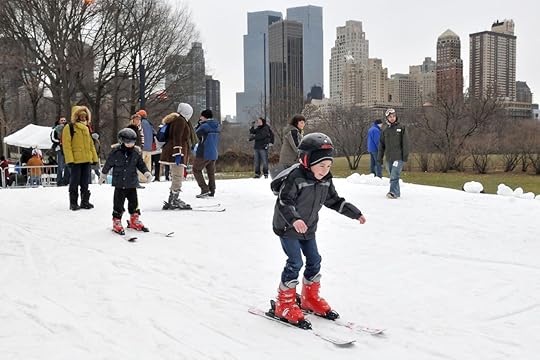
Photo: NYC Parks
You wouldn’t think of NYC as a snowboarding or skiing destination, but every year, the Parks and Recreation department holds a Winter Jam where you can do exactly that. The free festival packs all the best winter activities — snowboarding, skiing, sledding, and eating warm food — into one day-long event in the middle of Central Park. You won’t exactly be shredding snow on black diamond slopes, but you can either learn the basics with an instructor or practice for fun.
6. Walking through the park in the snow
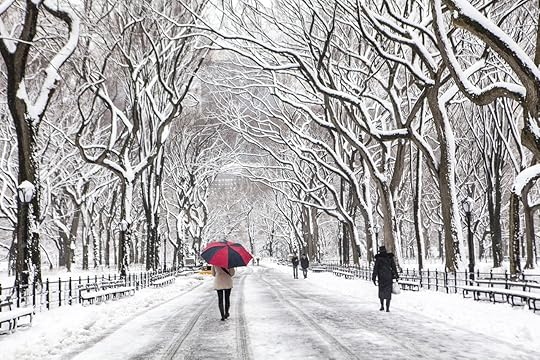
Photo: MISHELLA/Shutterstock
Walking through a park is an activity so simple that it may escape the minds of most, but in winter in NYC, when the white snow has blanketed all of the greenery and structures, it’s one of the things that should be at the top of everyone’s list. There’s an abundance of parks in the five boroughs so you can’t go wrong no matter which one you choose, but Central Park in Manhattan, Van Cortlandt in the Bronx, and Fort Greene Park in Brooklyn are especially magical. Bonus, because they’re all so large and spacious, you can have snowball fights galore. 

More like this: 5 ice rinks that aren’t in Rockefeller Center or Central Park
The post 6 best outdoor activities for winter in NYC appeared first on Matador Network.

November 19, 2018
Street art in Rome purifies the air
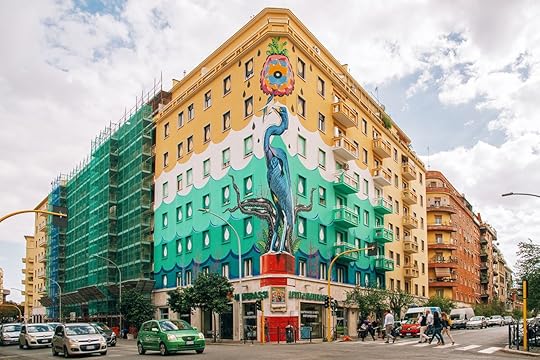
Street art is usually a treat for the eyes, but rarely does it provide tangible benefits beyond the aesthetic. The Hunting Pollution mural, however, by Milanese street artist Federico Massa, is beautiful and improves the air quality of Rome. Covering over 10,000 square feet of a seven-story building, the mural is made entirely of anti-pollution paint and is intended to raise awareness of environmental problems like global warming and animal extinction. Fittingly, it features the tri-colored heron, a species in danger of extinction. Ostinese, the neighborhood where the mural is displayed, is famous for its urban art, including iconic pieces like the Wall of Fame by JB Rock.

Photo: Iena Cruz
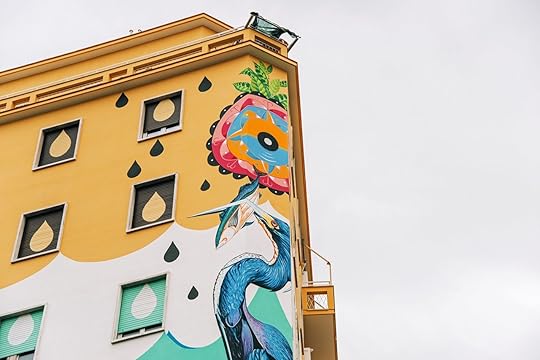
Photo: Iena Cruz
The Airlite paint used in the mural neutralizes pollutants and smog, and it can break down the levels of nitrogen oxides emitted by cars. Unlike traditional paint, Airlite paint dries and becomes cement within four hours. So much of it was used in this mural that it produces the same air-cleansing effect as a forest with 30 trees. Masa plan to paint Airlite murals in other cities as well, especially the United States.
Hunting Pollution was commissioned by Yourban2030, a female non-profit that uses art, cinema, fashion, and music to call attention to a range of environmental issues. If the eco-painting trend takes off, we may see a rise in sustainable street art. 
H/T: Lonely Planet

More like this: The 9 best street art cities in the world
The post This street art piece improves Rome’s air quality appeared first on Matador Network.

Digestif cultures around the world

There are times when overeating is perfectly acceptable. Thanksgiving, for instance, or just the holidays in general. Then there are times when it’s less socially acceptable, like when you’re staring down a burger made with more than a pound of beef for a whimsical food challenge. Regardless of how you go about overeating, it’s been happening for as long as people have had an abundance of food.
To combat exploding stomachs, cultures around the world turn to digestifs, or shots of liquor that are said to aid digestion. The next time you take in a little more than you can handle, try these digestifs from around the world.
Germany

Photo: Jagermeister
Germany is a beer-drinking country, but when it comes to an after-dinner drink, Germans reach for liquor and liqueurs. Eau de vies (spirits made from fruit) are common, as are bittersweet liqueurs. German eau de vies isn’t generally widely distributed outside the country, but there’s a good chance you’ve sampled the most famous German digestif without even realizing it: Jägermeister. Another option when you’re looking for something bitter is Underberg.
Digestifs to try: Jägermeister and Underberg
Switzerland
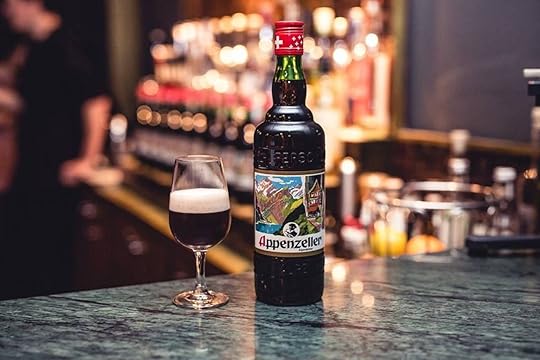
Photo: Appenzeller Alpenbitter/Facebook
Switzerland is bordered by three strong digestif countries: Italy, Germany, and France. So it makes sense that the Swiss would make and indulge in a digestif or two of their own. Swiss digestifs are bitter and herbal like what you’d find in Germany and Italy, and they’re the perfect thing to warm you up after (or during) a day on the slopes.
Digestifs to try: Appenzeller Alpenbitter and Fernet del Frate Angelico
France

Photo: Hennessy/Facebook
You’re going to need an after-dinner drink or two to get down all that buttery, cheesy French food. Luckily, France has no shortage of digestif options. There’s pastis, an anise-based drink similar to absinthe, and génépy, which is another wormwood-based liqueur. Then there are the grape- and apple-based liquors people outside of France are more familiar with, such as Cognac, Armagnac, and Calvados.
Digestifs to try: Dolin Genepy le Chamois, Green Chartreuse, Berneroy VSOP Calvados, and Hennessy
Mexico

Photo: Licor 43/Facebook
“In Mexico City, the most popular digestif is a Carajillo,” Danny Mena, the co-founder of Mezcales de Leyenda and the chef and restaurateur behind La Loncheria, tells Matador Network. It can be made from brandy, whiskey, or anise-flavored liqueur, but in Mexico, “It’s Licor 43 on the rocks that then gets a shot of espresso poured over. It’s pretty delicious!”
Digestifs to try: Licor 43
Czech Republic
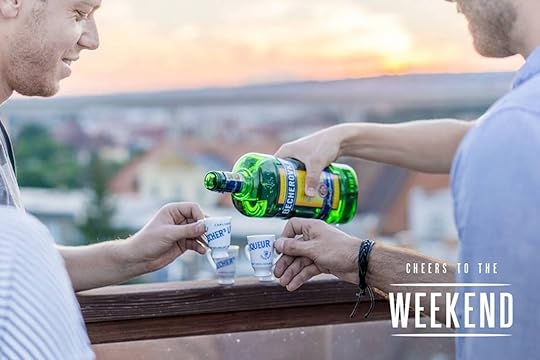
Photo: Becherovka Original/Facebook
The Czech Republic is another beer-drinking country that picks up a spirit after a long meal. Absinthe is popular as are spirits flavored with spice and herbs. Peppermint and cinnamon are popular flavors, but unspiced fruit brandies are common, as well. All are taken as a shot or sipped.
Digestifs to try: Becherovka and Bozkov
Italy

Photo: Fernet-Branca
Italy is the home of amaro, one of the most popular types of digestifs. The word translates to “bitter” and refers to a class of liquors spiced with herbs. There are many different regional styles of amari that range from mildly sweet to being so bitter you want to scrape your tongue off. Finding the right one is just a matter of sampling however many you can.
Digestifs to try: Fernet-Branca, Nonino Quintessentia, and Cynar
Hungary
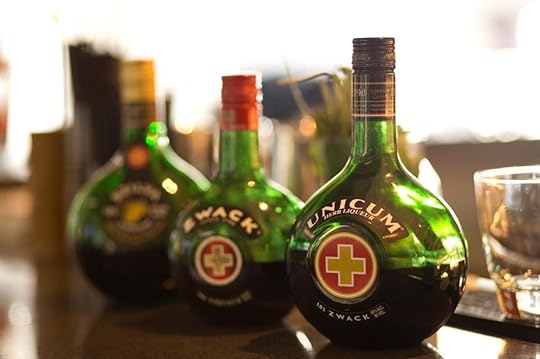
Photo: Zwack/Facebook
Digestifs in Hungary are big business. According to the Budapest Business Journal, digestifs are the most sold category of liquor in the country ahead of vodka, traditional pálinka, and everything else. Hungary’s digestifs are often flavored with secret recipes that include dozens of different herbs.
Digestifs to try: Zwack
Norway and Sweden

Photo: Linie Aquavit/Facebook
Scandinavian countries like Norway and Sweden eat heavy foods, and the traditional after-dinner drinks evolved to be just as powerful. The drink of choice is aquavit, an herbal spirit spiced with caraway, dill, and other herbs. Aquavit loosely translates to “water of life” and has been made for centuries. Once primarily only made in northern Europe, there are aquavits made around the world today.
Digestifs to try: Linie and Krogstad 

More like this: Where to go this Thanksgiving instead of going home
The post What countries around the world drink after they’ve eaten way too much appeared first on Matador Network.

Yellow Tail wine Super Bowl campaign

For those who watch the Super Bowl exclusively for the commercials, this could be the opportunity of a lifetime. Yellow Tail, an Australian wine brand, is looking to create a Super Bowl commercial based entirely on user-generated content. To jump-start its “Tastes Like Happy” campaign, Yellow Tail is inviting fans to create and submit short videos of what makes them happy. The two winners will have their videos featured in the Super Bowl commercial, and get some pretty wide-ranging social media exposure. One of the two winners will also receive the grand prize: an all-expenses-paid trip (value is $15,000) to their happy place, wherever that may be.
To enter, share a six-second video of what makes you happy on Instagram or Twitter, with the hashtags #tasteslikehappy and #contest. Iain Douglas, Chief Marketing Officer for Deutsch Family Wine & Spirits (marketer for Yellow Tail) said in a press release, “This is a shot at stardom, a real opportunity to gain thousand — even millions — of followers virtually overnight.”
Entrants must reside in the United States and be at least 21 years old. Videos must also be original, submitted in English, and will be judged based on quality, creativity, and the successful expression of a visually stimulating “happy moment.” The contest runs until November 28. View the official rules here. 

More like this: The most amazing wine regions on the East Coast
The post Win a free trip and get your face in a Super Bowl commercial with Yellow Tail wine appeared first on Matador Network.

Pianist serenades elephants

We already knew that elephants were some of the cutest animals out there, but now we also know that they have sophisticated tastes in music. The Elephants World sanctuary in Tambon Wang Dong, Thailand, is home to dozens of elderly, ailing, and blind elephants, now retired from their trekking or logging careers. When Paul Barton, a classical pianist, discovered the sanctuary online, he thought he could soothe and entertain the pachyderms by playing for them. He asked Elephants World if he could bring his piano to play for the elephants in their golden years and the sanctuary said yes.
In the many videos of Barton’s performances at the sanctuary, it seems that the elephants are enjoying the show. One particular video, “Bach on Piano for Blind Elephant,” has over 1.6 million views. In the video, Barton said of his blind listener, “She was often in pain, and I like to think maybe the soothing music gave her some comfort in the darkness.”
Their appreciation of the classics isn’t a total surprise, either. According to a study from 2008, classical music helps reduce elephants’ stereotypy — the distressing behavior in captive animals that results from the denial of social and environmental enrichment. And this isn’t the famously intelligent animals’ first foray into culture, either. Back in 2000, a group of elephants actually formed an orchestra, and in 2014 and 2015, paintings made by elephants sold at an auction for $25,000. 
H/T: Insider

More like this: 3 reputable elephant sanctuaries in Thailand
The post A pianist serenades blind elephants at this Thailand sanctuary appeared first on Matador Network.

Answers to airline questions

Back in the ’80s and ’90s, it seemed like every stand-up comedian in the world had a bit where they asked, “What’s the deal with airline food?” Then, they went on a five-minute tirade about bland mystery-meat sandwiches and wilted lettuce. Of course, airline food isn’t really a thing anymore, so nobody wonders what the “deal” with it is. But there’s still plenty of other mysteries of flying we can ponder. Like why do we have to turn off our phones? And how do the toilets work? Those and other burning questions are all answered below as we tackle 20 questions you’ve always had about flying.
1. Why do you have to open window shades for takeoff and landing?
As much as the pilots and flight attendants want you to enjoy the spectacular sights of a landing in Sacramento, the reason you have to have your shades up is for safety. Should something go wrong, with shades up the crew can see fires, debris, or other hazards that may be outside. This way, flight attendants can better plan emergency exits and other procedures.
2. Why do I have to turn my phone off onboard?
Though it’s never been proven that cellular devices or signals interfere with an airplane’s electronic equipment, they might. This is why the FAA mandated phones be turned off, essentially to cover themselves in case it’s ever discovered that they actually cause interference. Though, honestly, is anyone really upset we can’t listen to other people’s phone calls on airplanes?
3. Why must electronic devices be turned off during takeoff and landing?
Much like with cell phones, computers and tablets don’t necessarily interfere with any part of a plane’s equipment, but the FAA errs on the side of caution in case they might. Also, in case of a rough landing or extreme turbulence, it also wants to make sure your tablet doesn’t become a giant flying blunt object.
4. Why do I have to put my seat and tray table up for takeoff and landing?
This is also done in case of an emergency. Though exiting an airplane is never an efficient experience, having seats and tray tables up when people need to exit quickly helps move things along.
5. What is that little hole in the window for?
Airplane windows are two-paned devices made of plexiglass. The outer window keeps air out of the plane, the inner one is there so passengers don’t accidentally break the outer window. The little hole in the inner window was devised as a pressure release, so that if the outer window does break, the air pressure won’t break the inner window too.
6. Why do planes fly at 36,000 feet?
The fact is 36,000 is just an average, as most planes fly somewhere between 30,000 to 40,000 feet. The ideal altitude varies by aircraft, direction of flights, and turbulence. It’s also where planes can catch the jetstream to help push the plane along.
7. Do you really get drunker when you’re flying?
Technically, no. Though anecdotally people say “booze hits you harder at altitude,” your actual BAC does not increase based on how high up you are. But because you have less oxygen going to your brain, and the air is bone dry, you may feel the effects a little more. And you’ll definitely get dehydrated faster — meaning those post-flight hangovers might be nastier.
8. What happens if an engine fails?
Ever seen a hang glider? No engines on those things, and they fly around just fine. Think of your plane as a giant hang glider, with engines used to generate enough thrust to get it in the air, then push it along a little faster once it’s there. If one engine fails, you might not even notice. If both fail, you’ll definitely notice, and will have to make an emergency landing somewhere. But the plane will glide until it can’t anymore, and will not fall out of the sky like there was an executive order repealing the laws of physics.
9. What happens if somebody dies on a plane?
Singapore Airlines once had an infamous corpse room for its long-haul flights, where dead bodies would go should someone keel over mid-flight. It doesn’t exist anymore, and now flight attendants will either move the deceased passenger into an empty area like a lavatory, galley, or empty seat. Lacking those, they will cover the body with a sheet until landing.
10. What happens if a plane gets struck by lightning?
There’s an urban legend that says an airplane is the safest place to be when you get hit by lightning. Though this hasn’t been proven statistically true, lightning strikes don’t affect the plane a whole lot. The average plane actually gets hit about twice a year, but no major commercial crash has been traced to a lightning strike.
11. How far do you fall during turbulence?
Though it might feel like you’re on an airborne version of Deadliest Catch during particularly rough turbulence, the fact is you aren’t falling far. Most chop that requires holding onto the lavatory handle is only a few feet. When the pilot asks the flight attendants to take their seats, you’re looking at a 10 to 20-foot drop. The absolute most you’ll ever drop is about 100 feet, which, while terrifying, is still less than your fall at half the roller coasters at Cedar Point.
12. How do the toilets work?
The toilets are like a way-grosser version of those vacuum tube banks used to send you money at the drive through. Unlike home toilets, that drain water out of the bowl and into the sewer, plane toilets are vacuum tubes with openings into the bowl. Flushing sucks whatever’s in the bowl into the tube, which leads to a tank in the tail of the plane. It’s kept there until landing, when the tank is refreshed.
13. Do toilets really drop frozen waste on people?
New planes do not do this, and most tales you see on the news of frozen airplane waste denting a car or ruining a quincenera are actually bird droppings. That said, some old models do still drop waste down over areas they assume are unpopulated. But it’s extremely rare.
14. Where is the safest place to be during a crash?
Those big seats and free drinks up in first class are nice and all, but if you’re into stuff like crash safety, the back of the plane is where it’s at. A 2007 study from Popular Mechanics looked at 36 years of NTSB crash data and found in the extremely rare event of plane crashes, you’re statistically safest near the tail.
15. Why do planes still have ashtrays?
Anyone who’s listened to 10 seconds of a safety demonstration knows smoking is illegal on planes. But for some reason you’ll still see ashtrays on lavatory doors, and occasionally armrests. The reason is in case some rogue passenger just INSISTS on lighting up during a flight, they’ll have somewhere to extinguish said cigarette so there won’t be danger of a fire onboard.
16. Are flight attendants ever scared of crashing?
You’d think someone who flew multiple times a day, multiple times a week might be afraid the law of averages would catch up with them. Not so much. According to a recent survey of flight attendants from Stratos Jets, fire onboard is actually their biggest concern, with 96 percent fearing it. Only 79 percent were afraid of crashes.
17. Why does my skin dry out on planes?
Air on planes is pressurized at about 10,000 feet, meaning you’re getting similar air as you might atop a small mountain in the Rockies. It’s also painfully dry, kept at a throat-scratching 20 percent humidity, or about the same moisture you’d find in the Sahara.
18. How fast are you going at takeoff and landing?
You ever notice how sometimes you put your laptop on the floor only to find it slide about 10 rows up because you’re going so fast when you land? That’s because takeoff and landing speeds are generally in the neighborhood of 150 to 200 miles per hour.
19. Why are the lights dimmed for takeoff and landing?
This isn’t done to create a romantic mood as you stare at the bright lights of Grapevine, Texas, on your ascent to the heavens. It’s done so that, in case there’s an emergency, your eyes are already adjusted to dim lighting, and you won’t be running around half-blinded trying to evacuate the airplane.
20. Why do I cry at movies on planes?
Okay, maybe YOU don’t, but the phenomenon of overly-emotional reactions to inflight movies is a real thing. So much so Virgin America began putting “emotional health warnings” before some particularly tear-jerking films. No concrete study has been done but psychologists chalk it up to a combination of the stress of flying, the extreme isolation of staring at a screen with headphones on, and decreased oxygen to the brain. Or maybe we’re all just getting soft. 

More like this: The best (and worst) drinks to order on an airplane
The post Why you have to put your shades up for takeoff, and other answers to your burning airline questions appeared first on Matador Network.

Passengers stranded in Siberia
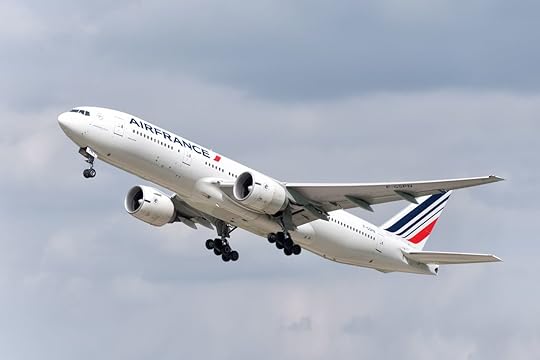
There’s never a good time or place to have an airline captain tell you they need to make an emergency landing, but these passengers really had it bad. When an Air France flight from Paris to Shanghai was forced to make an emergency landing this week, 282 passengers found themselves passing three unexpected days in Siberia. Air France told AFP that the the plane diverted “to Irkutsk in Russia after an acrid smell and light smoke appeared on board.” Luckily, no one was harmed in the process.
The passengers were not dressed appropriately for the freezing Siberian climate, which sat around nine degrees Fahrenheit. They were put up at hotels for the duration of their stay, but because they didn’t have Russian visas, passengers were under constant surveillance by local police.
Although a replacement plane was supposed to come to the rescue last Monday, more technical difficulties prevented that from happening, causing the “layover” to last a little longer. Finally, a third Air France plane arrived in Irkutsk on Wednesday morning, to finally carry passengers to Shanghai. 
H/T: Travel & Leisure

More like this: The 10 best airlines to travel in economy
The post Air France plane makes emergency landing in freezing Siberia, stranding 282 passengers appeared first on Matador Network.

What happens in winter in Philly

Fall foliage and football weather is rapidly making way to slush, savesies, slippery rails, and deepened potholes in Philadelphia. But the temperatures and massive holiday light displays are just two of the unmistakable signs that winter is coming to Philly.
1. Cones start appearing in South Philly parking spots.
The Philadelphia Police Department can do all of the clever campaigns surrounding “No Savesies” that it wants — we’re not buying it. If you shovel it, it’s yours. Time to get your premium, spot-saving orange cones, folding chairs, and milk crates ready for the season.
2. The ratio of Eagles jerseys around town are changing.
With three of the four major Philly sports teams heading into winter, the Eagles jerseys have some competition. The proportion of Flyers and Sixers to Birds gear increases with the excitement of the new hockey and basketball seasons. Scanning the crowd to see how well a team is represented textile-wise is a good way to know what season it is.
3. Road crews prepare for winter precipitation.
You’ll undoubtedly notice a complete absence of PennDOT trucks fixing all of the treacherous potholes from last winter. ‘Tis the season to busily ignore them in preparation for a winter of bigger, deeper holes that will further destroy your car.
4. Entire blocks coordinate elaborate Christmas light displays.
Whole blocks of houses are decorated with as many lights, blow-ups, and outdoor decorations as you can imagine. Everyone wins — PECO, kids, and neighbors who don’t have to put on their own lights because it looks damn near daylight outside.
5. The trash collection gets spotty.
With the onset of nasty winter weather comes spotty trash collection. Everyone in Philly has seen collectors passing by to leave their trash because they don’t touch the “frozen” stuff.
6. Santa’s not the only one getting cookies.
We all win when Tastykake puts another item on the shelves. It may not be our favorite, but we will mindlessly eat the heck out of its holiday cookies anyway.
7. Seasonal brews fill our bellies and help keep us warm.
An influx of winter beers fills local taps to give us the joy that the weather won’t. Mad Elves and Festivus celebrations inside distract us from the steady march of winter.
8. It’s the only time we don’t fully hate Comcast.
As sure as the salt trucks won’t hit the roads on time, Comcast will hold its holiday light show. For a few moments, our dark hearts are warmed, and we forget about how much it screwed up our last 15 consecutive bills. We hate to give it credit for anything at all, but the holiday show is pretty delightful.
9. Slippery rail season rears its ugly head.
You missed having your train delayed for days at a time due to a predictable weather event, but winter’s coming so you won’t have long to wait. Rain and leaves combine to create a SEPTA-induced nightmare. Why no one can remove the leaves is a mystery. Our fall foliage may be beautiful to look at, but when those leaves come down, they take an entire transit system with them. 

More like this: 10 things you’ll never hear someone from Philly say
The post 9 signs winter is coming in Philadelphia appeared first on Matador Network.

Map of education years

If you’re thinking of studying abroad and sticking it out for a few years, you’ll want to go to a place that takes education seriously, so you can make the best out of your experience.
A quick look at the map created by Redditor trinitronbxb will show which countries have the highest number of years of mandated schooling in Europe, the Middle East, and North Africa. The inhabitants of Nordic countries rank among those most educated, with people attending school in Sweden, Norway, and Iceland for an average of 12-13 years. Finland comes in at number one with an average of 14-15 years, sharing the spot with Germany. Switzerland and Latvia also rank highly, with 13-14 years of schooling.
Turkey, Iran, and Portugal are among the countries with the fewest years of schooling, with an average of 8-9 years, with Morocco bringing up the rear at 4-5 years. Mediterranean nations like Italy and Greece share an educational similarity with Russia, Ukraine, Georgia, and Azerbaijan — they all have an average schooling level of 10-11 years. 

Photo: trinitronbxb/Reddit

More like this: 11 things travel can teach you that college never will
The post This map shows the average years of schooling in Europe and more appeared first on Matador Network.

Matador Network's Blog
- Matador Network's profile
- 6 followers



